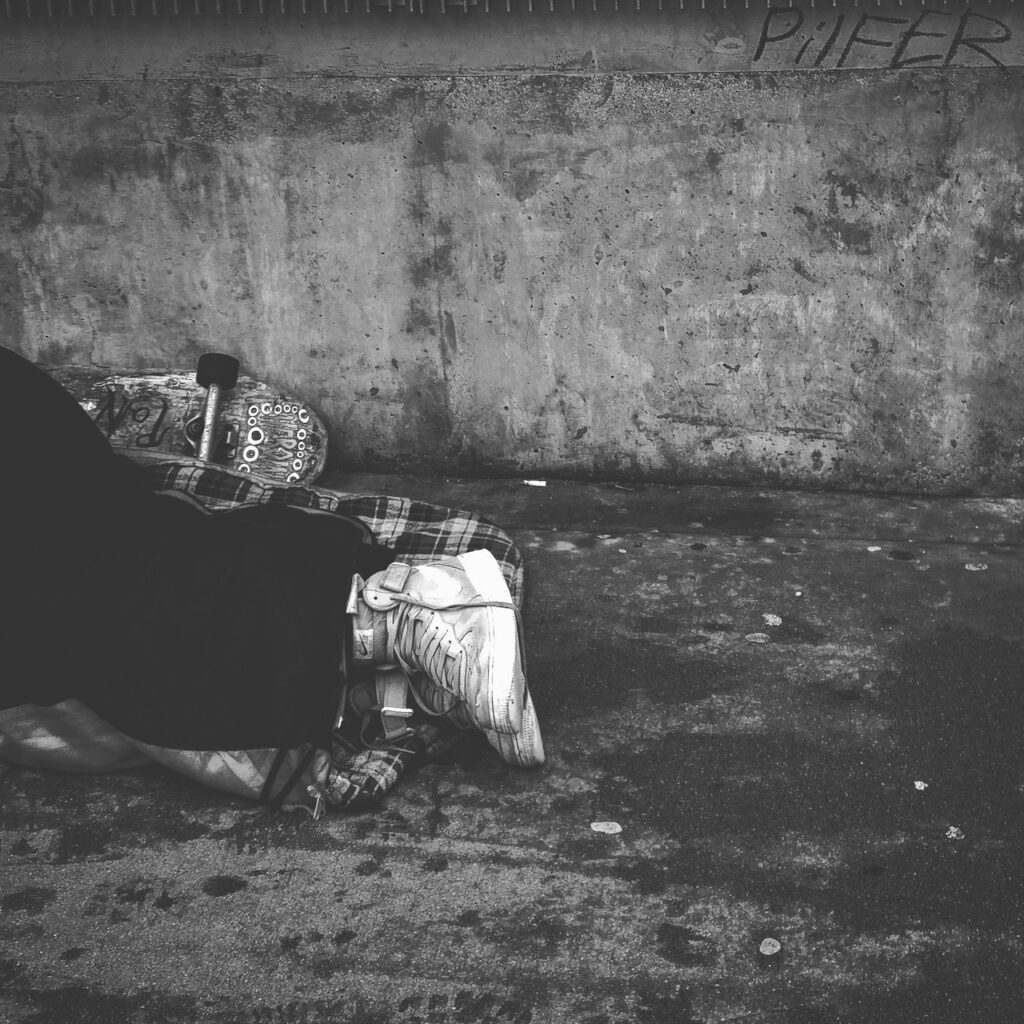
By Tran Nguyen. San Jose Spotlight. Bay City News.
San Jose tops the list of the top 100 cities with the highest number of homeless young adults per capita, highlighting a growing crisis in the region.
In the heart of Silicon Valley, there are nearly 85 homeless residents ages 18 to 24 per 100,000 residents, putting San Jose at No. 1 in the United States. The study, conducted by United Way of the National Capital Area, analyzed data from the Census Bureau and the Department of Housing and Urban Development in 100 major cities across the country. The study was released in late January.
The study also finds that the problem in San Jose is particularly acute. The city has nearly 50 more homeless youth per capita than the second-highest city on the list, New York City, which has roughly 36 homeless young residents per 100,000 people. Los Angeles lands at No. 3, with 32 homeless young adults per 100,000 residents.
“This highlights the need for more effective solutions to address youth homelessness in this area, particularly for youth of color,” the study said, noting the need for more affordable housing, homeless services and policies that address systemic barriers.
San Jose has seen its homeless population explode over the past decade, with more than 6,650 people living on the streets as of 2022. The city is awaiting the latest count after several hundred volunteers conducted a new count earlier this year.
According to data from last year, 28 percent of homeless San Jose residents ages 18 to 24 experienced homelessness for the first time. That has doubled since 2017.
Santa Clara County Office of Supportive Housing Director Consuelo Hernandez did not respond in time for publication.
Scott Myers-Lipton, a sociology professor at San Jose State University, said the findings are not surprising. A fall 2021 semester survey by SJSU Cares showed that 11.2 percent of students, or 624 of the 5,680 respondents, experienced homelessness at some point during the year.
“This has been a crisis for years,” Myers-Lipton told San Jose Spotlight, adding that SJSU has not done enough to address the problems. “At SJSU, it’s like pulling teeth to get them to implement the agreement to provide emergency beds.”
Myers-Lipton has worked with the homeless student coalition on campus to advocate for more resources. The biggest challenges for her students are the high cost of living and rent in San Jose, she said.
“If rent is $3,100 per apartment and you’re making $17 an hour minimum wage, how can you afford that?” Myers-Lipton said. “Students have told me that they sometimes have eight people in one apartment. This is a structural problem and it’s a shame.”
He said the city could also help address the problem by raising its minimum wage to at least match the rate in Mountain View at $18.15 an hour.
"Is that going to solve the problem? No, but it's an extra $2,000 a year," he said.
Robert Aguirre, a former homeless resident turned advocate, said the problem is nothing new in San Jose. As the wealth gap in the region continues to grow, more young people are being pushed into homelessness, even if they work full time, he said. The region also doesn’t have many resources for young people.
“There’s very little being done to target that particular population,” Aguirre told San Jose Spotlight. “There’s certainly a focus on veterans, the elderly, disabled people and children. Except for the Bill Wilson Center, there’s really not a lot going on.”
In San Jose, officials are racing to build housing and provide resources for young adults. The city, in partnership with the Bill Wilson Center, is working to transform the Pavilion Inn hotel on Fourth Street into 39 apartments for people ages 18 to 25.
City officials also voted to help fund a new affordable housing project at 1510-1540 Parkmoor Ave. that will feature 40 apartments for young adults. But those projects won’t be completed until at least 2024.
Anthony Majano, president of the Student Homeless Alliance at San Jose State University, said many of his peers have moved out of San Jose because of high rents. He said the city and state could do more to help young adults stay homeless by strengthening tenants’ rights and rent controls.
“We don’t have the right to an attorney here in San Jose, and we don’t have a lot of other resources or assistance to help us,” Majano told San Jose Spotlight. “We are incredibly vulnerable to the high cost of living here.”
You may be interested in: Should violent acts against homeless people be considered hate crimes?

